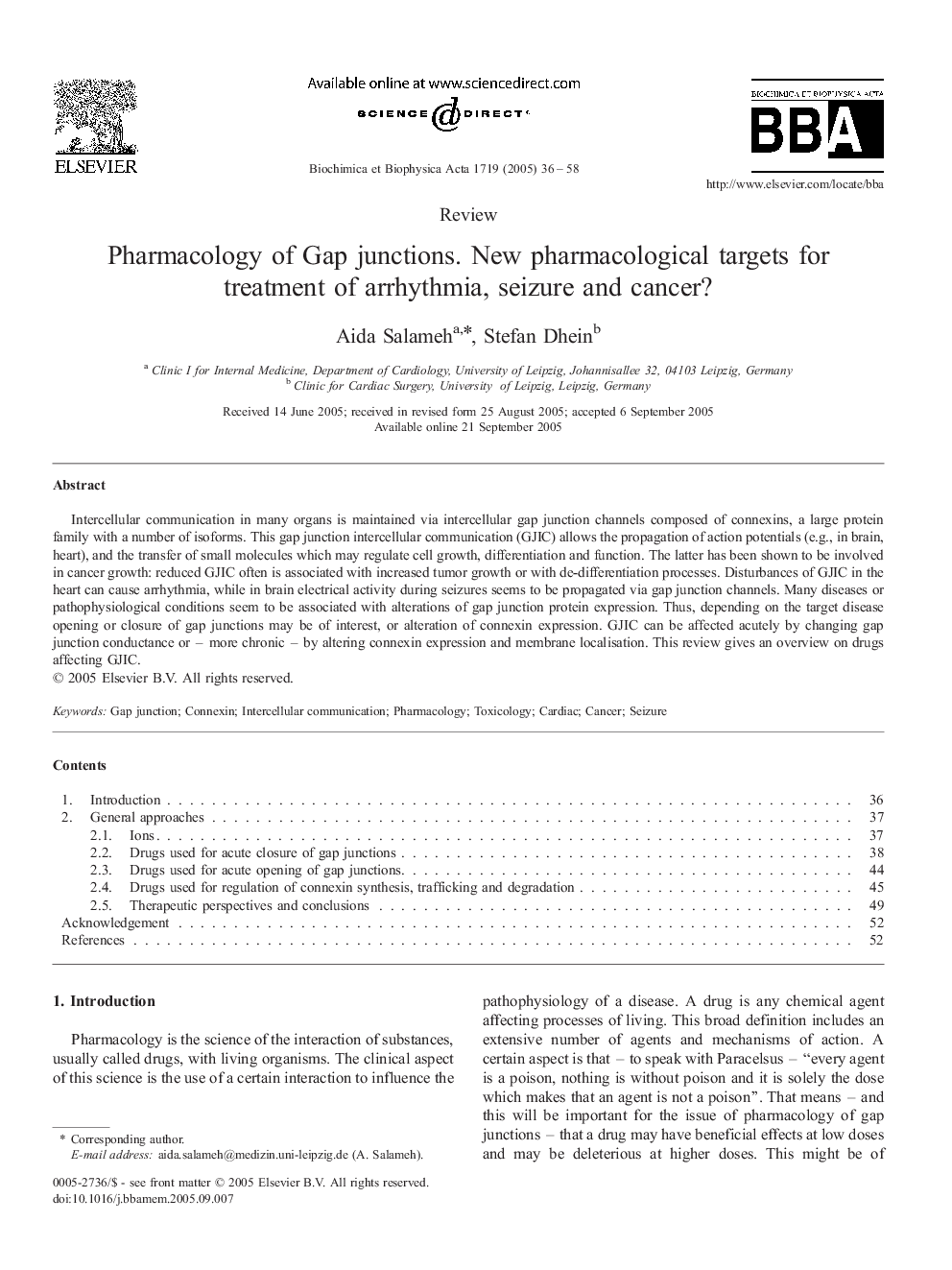| Article ID | Journal | Published Year | Pages | File Type |
|---|---|---|---|---|
| 9885117 | Biochimica et Biophysica Acta (BBA) - Biomembranes | 2005 | 23 Pages |
Abstract
Intercellular communication in many organs is maintained via intercellular gap junction channels composed of connexins, a large protein family with a number of isoforms. This gap junction intercellular communication (GJIC) allows the propagation of action potentials (e.g., in brain, heart), and the transfer of small molecules which may regulate cell growth, differentiation and function. The latter has been shown to be involved in cancer growth: reduced GJIC often is associated with increased tumor growth or with de-differentiation processes. Disturbances of GJIC in the heart can cause arrhythmia, while in brain electrical activity during seizures seems to be propagated via gap junction channels. Many diseases or pathophysiological conditions seem to be associated with alterations of gap junction protein expression. Thus, depending on the target disease opening or closure of gap junctions may be of interest, or alteration of connexin expression. GJIC can be affected acutely by changing gap junction conductance or - more chronic - by altering connexin expression and membrane localisation. This review gives an overview on drugs affecting GJIC.
Related Topics
Life Sciences
Biochemistry, Genetics and Molecular Biology
Biochemistry
Authors
Aida Salameh, Stefan Dhein,
